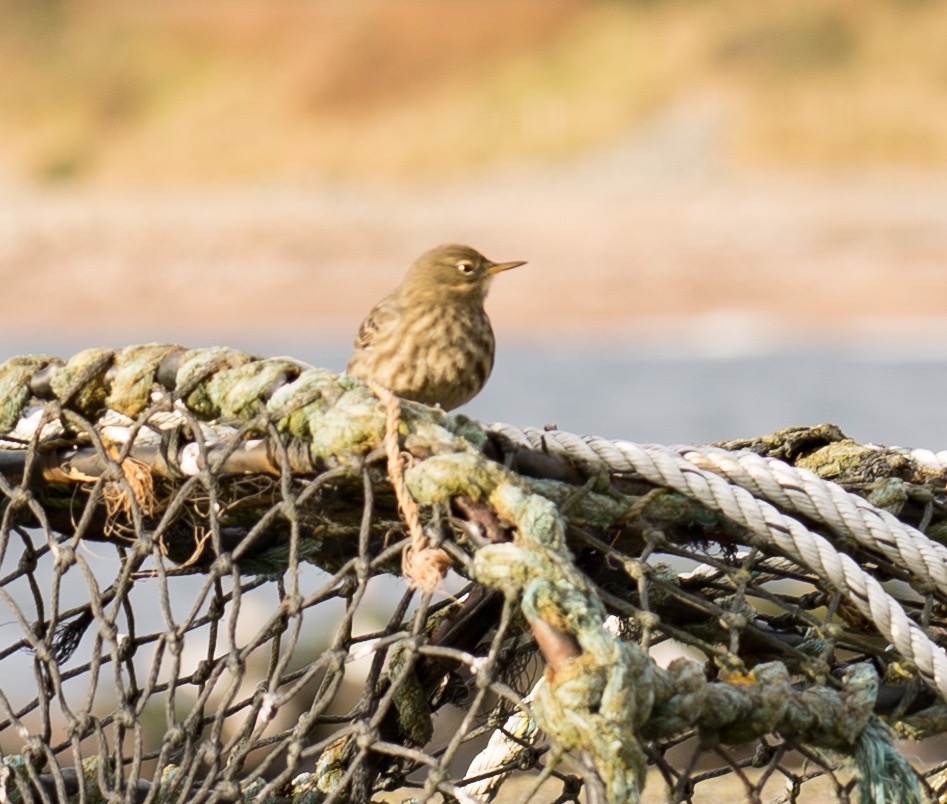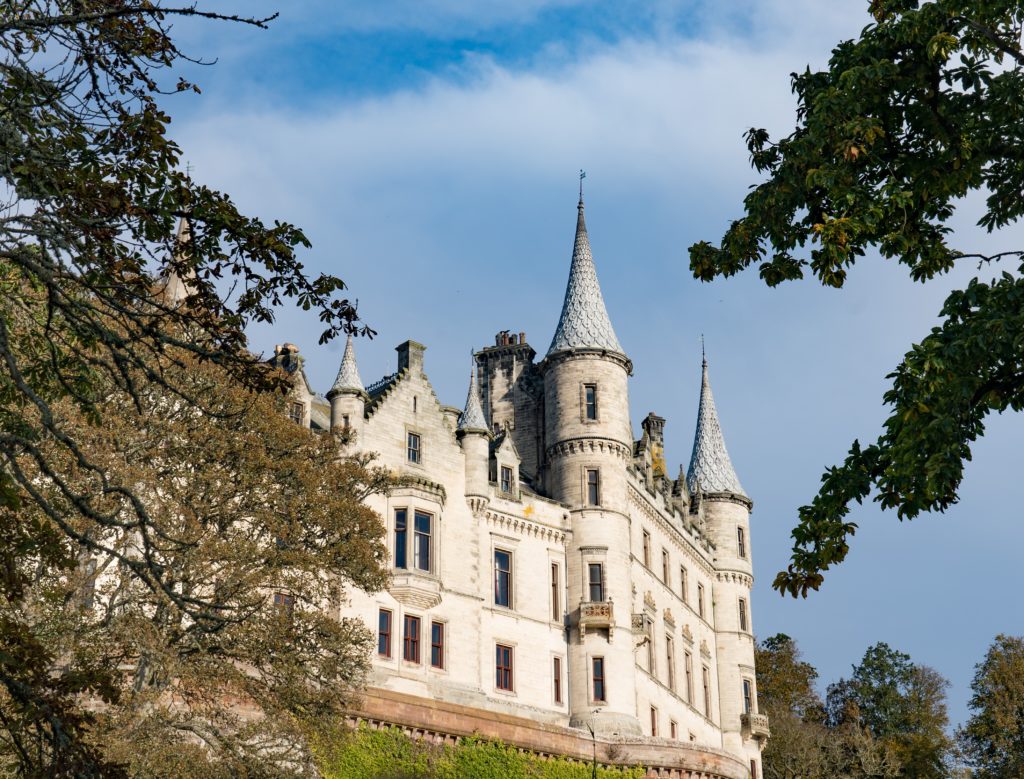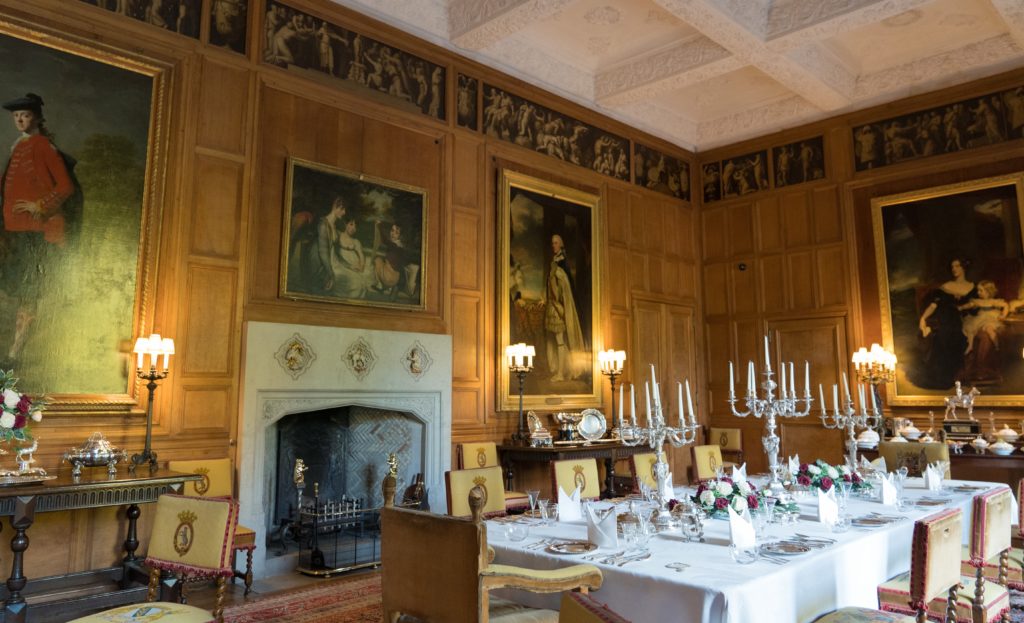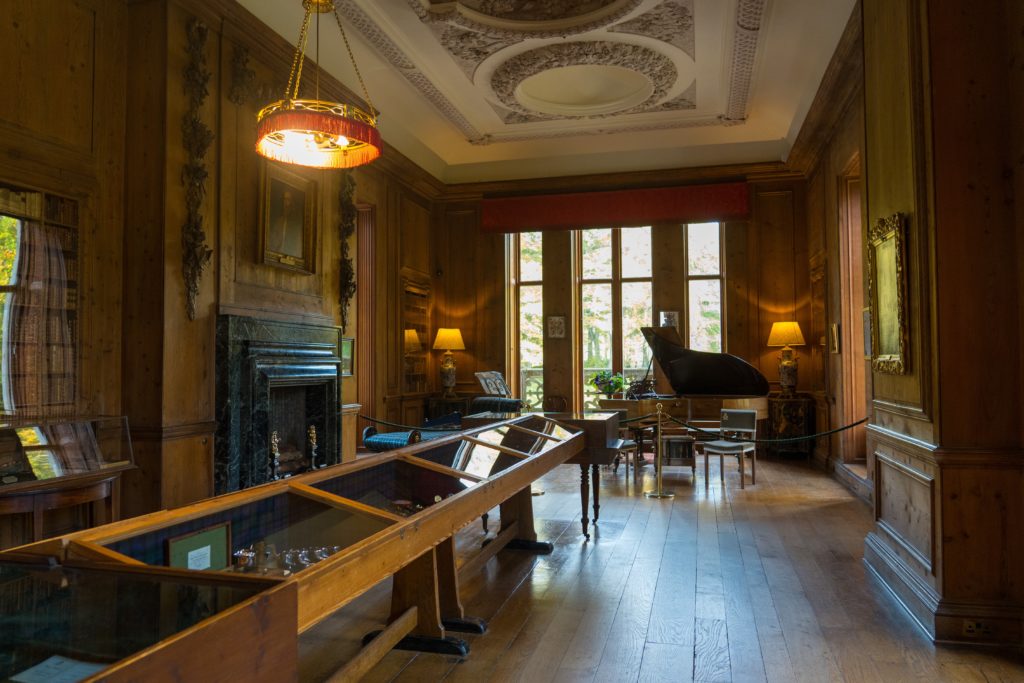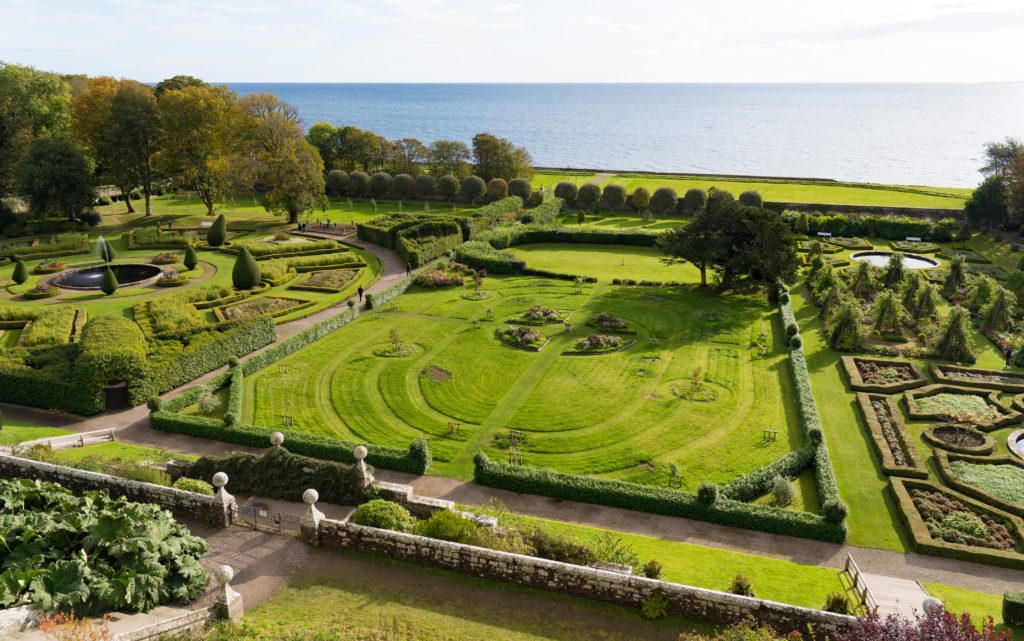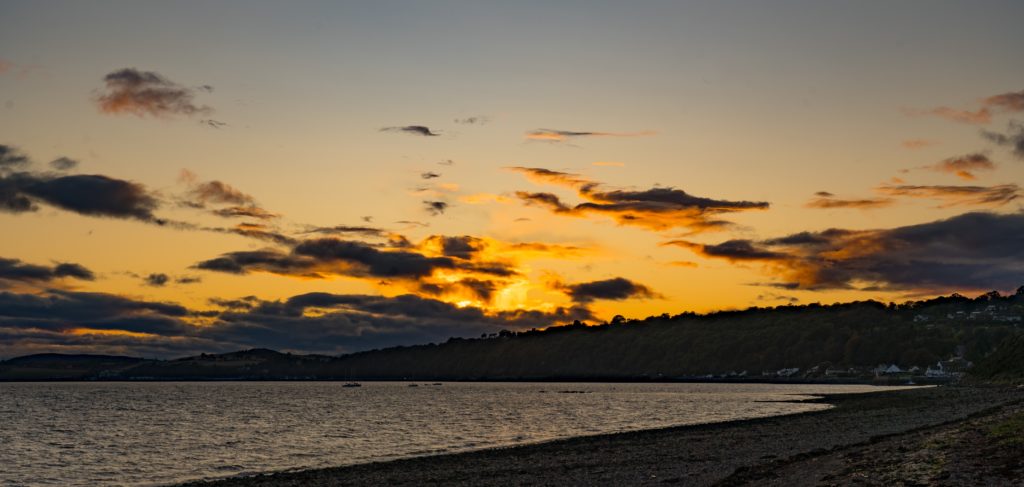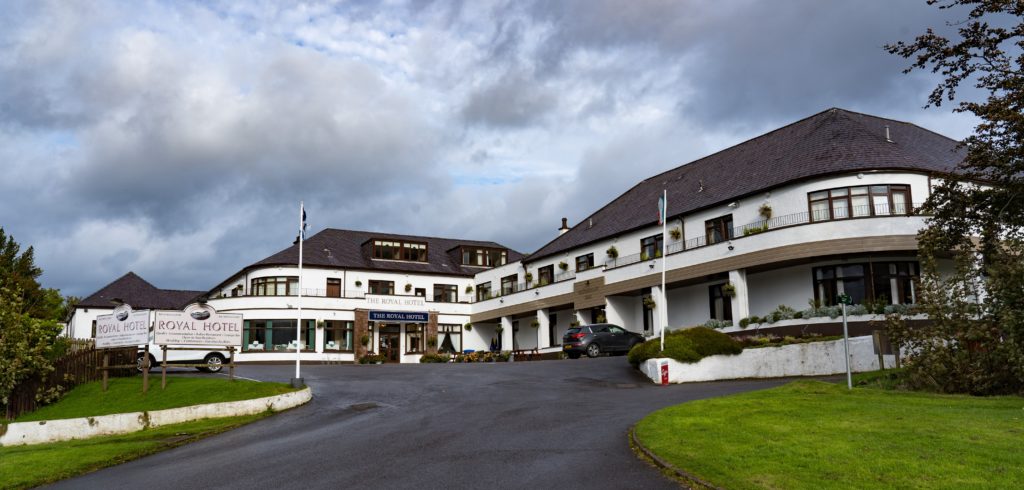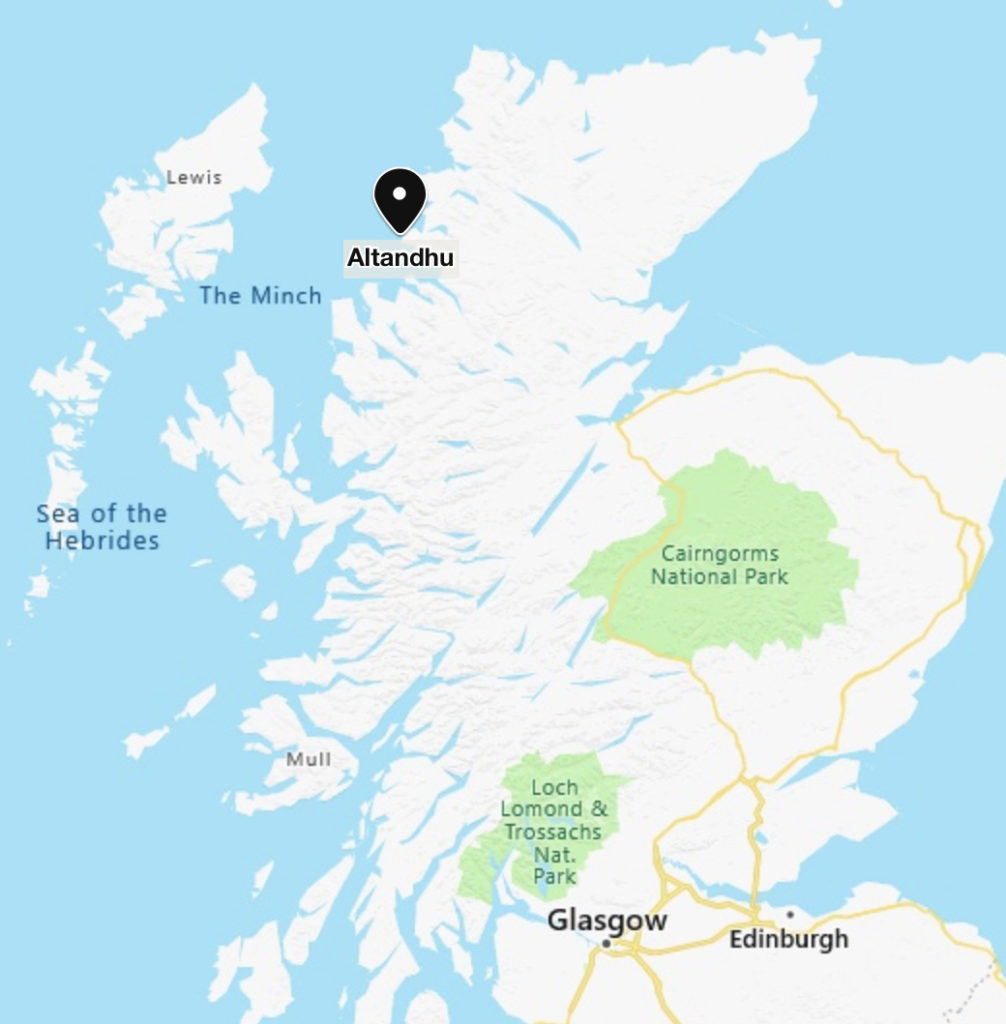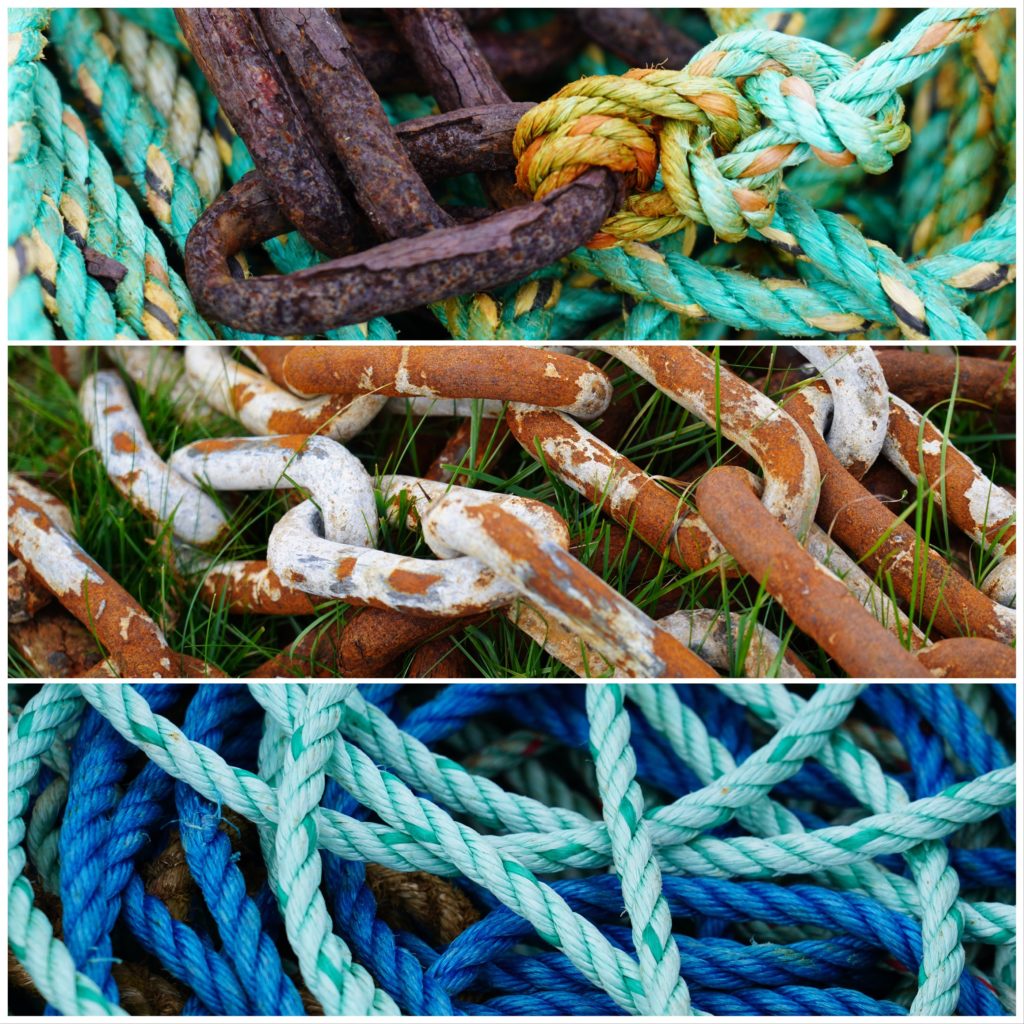Author: Mrs A
Location: Northwich and Chester, Cheshire, UK
I especially look forward to catching up with friends from my university days. Like for many, going to university was a time of escape and reinvention for me, leaving a small town where it was hard to not see a familiar face, and move to the other end of the country to a small city. I left school with really only one true friend I remain friends with today, most others having gone in different life directions. Chester was a chance to start anew, make new friends who accept me for who I am.
I fell on my feet in many ways, receiving a place in halls of residence, with a corridor of lovely people. We soon became firm friends, a core group of girls we called ‘The Ladies’ Wrecked-Tangle’. We partied through our first year, then shared a house together and continued the party (inter dispersed with a bit of studying and exams) for two more years. It has been about 28 years since we all first met, and though we see a lot less of one another these days, with sometimes years between visits, it is as though we’ve never been apart. The laughter still flows, the stories and the wine. We simply couldn’t be in the country and not catch up.
Thursday morning Mark and I left Kendal and travelled into Cheshire, spending Thursday on a farm about 40 minutes from Chester. It was a cool, crisp autumnal afternoon, and with Mr A’s ankle on the mend took a stroll around the local lanes. There were plenty of birds about, squirrels scurrying up trees, collecting acorns and other nuts to store for the winter, and some quite lovely scenery.





And so after another rainy night, we pulled away and drove over to Chester, pulling into the carpark at Chester Racecourse. You can in fact park overnight at the race course in self contained motorhomes but we had decided to treat ourselves to a couple of nights in a hotel, and booked at the Holiday Inn just outside the city walls.
We had not long arrived when my friend Fiona pulled up in her car, picking me up to go to lunch. I had a great afternoon catching up with her, my first-week room mate, Vicki, and another friend, Sarah – the years falling away since our last catch up.
We ate delicious Italian food at Etalia at the Red House, overlooking the River Dee, the rain falling heavily outside while we munched on mussels, sea bass and bruschetta. No wine today though, we stuck to the water. We must be getting sensible in our old age!

Back: Catherine, Vicki, Front: Fiona, Sarah
It has been about 24 years since I lived in Chester, and at least a decade since I spent any time in the city, but I was suitably impressed. The council clearly has a grand plan for the city. Chester has always been mostly pedestrianised and full of boutique shops, but now has grown to encompass art-house theatres, cinema and a wide range of cafes and restaurants within its walls. A lot of attention has been paid to maintaining the history and heritage while bringing the city into the current century, and future plans appear to encompass this theme. It feels like a prosperous city with a lot of life.
Mark returned from his afternoon ambling the streets and getting a haircut feeling positive about the city and its great upbeat vibe.
Friday night we joined my friend Emma and her husband Nick for dinner at a The Old Harker’s Arms, a buzzing and vibrant pub near the canal. Mark was beside himself with excitement on seeing that it was pie week – with literally three courses on offer! We had a fabulous evening, our first chance to get to know Nick in a more intimate group.


We met up with Emma and Nick again for lunch on Saturday, heading into Storyhouse. This is a perfect example of how Chester is breathing life into old buildings, bringing them into the current century. Back when I lived here, this was a slightly run down 1930s cinema, but now has been redesigned and extended to encompass the library, two theatres, a cinema, restaurant and two bars. We chose lunch from an imaginative menu and ate in a room full of light and atmosphere, the walls lined with books. Books – remember them? What warmth they bring to an environment!
It is definitely worth visiting, even just to see how the interior architecture melds together the old features of staircases, pillars and walls with the newer more modern areas. The lunch menu was great, and there are plenty of shows to choose from. A fabulous cultural centre for the city.

It rained heavily during lunch, but the sun came out as we finished, so the four of us took a stroll around the walls. If you’re not familiar with Chester, it was formed as a fortress in around 60 or 70 CE by the Romans. The walls circumnavigate the city almost entirely for 3km (about 1.8 miles) and are a great way to see some of the main features of the city.

The sun shone for us, the city gleaming in autumnal splendour. As we walked past the cathedral we watched a falconry display in the gardens – apparently they have a golden eagle, hawks and owls there.
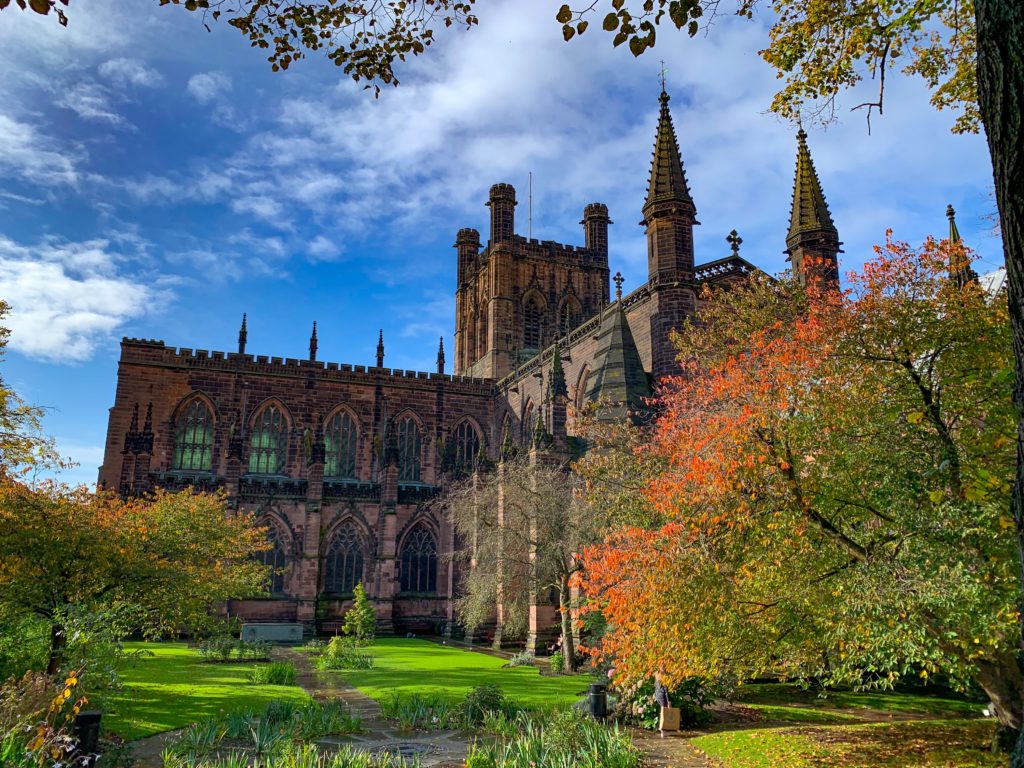

Eastgate stands on the original entranceway to the Roman fortress, Deva Victrix. From Eastgate you look down over Eastgate Street – some of the establishments have not changed over the years – HSBC Bank (bottom right in the photo below) was originally Midland Bank, and where I got my first student overdraft!
Chester’s getting ready for Christmas, with lights strung up across every street. It seems green is this year’s theme. They are all apparently energy efficient LED lights, and will be switched on 14 November, two days before the big Christmas market.
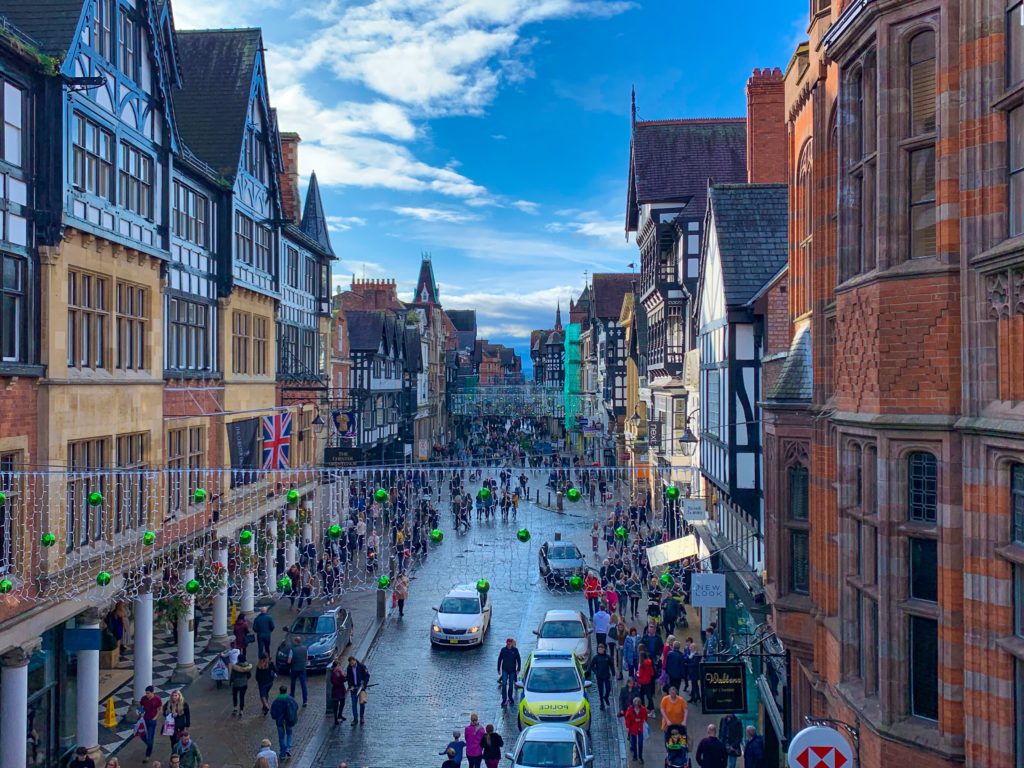
We continued around the walls, past the Roman Gardens. Here are displayed fragments of Deva Victrix unearthed during excavations in the late 1800s. Included are the remains of bathing houses, mosaics and pillars.

We continued around with the River Dee our next location. From here you can cross the river and walk across the other bank, or back in our student days, drink strawberry daiquiris in the sunshine (happy hour only!).


We continued our circuit, finally passing the castle (dating from 1070) and finally the racecourse and back to our hotel via a tour of Truffy.
We met back up with Emma and Nick early evening at a wine bar on Watergate Street, Corks Out. They had an interesting selection of wine from around the world, and a policy of keeping a step ahead of the supermarkets in sourcing interesting tipples. The bar’s located in a 13th century crypt, which adds to the atmosphere.

We concluded our evening at Ruan Orchid, a delicious Thai restaurant – definitely highly recommended, but book in advance. It’s a boutique venue with authentic Thai food, and deservedly popular.
It was a brilliant visit and we’ll definitely be back again. After all this time it was great to be reminded what a friendly, vibrant little city it is, with so much to see and do, especially when it allows us spend some precious time with longtime friends. Farewell Chester, we will return!
























